Clipart tagged: ‘auditory’
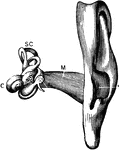
The Auditory Apparatus
The auditory apparatus with the surrounding bone removed. Labels: M, external auditory canal; SC, semicircular…
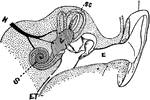
Diagram of the Auditory Apparatus
A diagram of a section of the auditory apparatus. Labels: E, external canal; M, in the middle ear; V,…
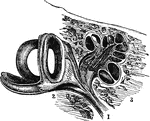
Auditory Nerve
"By anatomists, the auditory nerve is associated with the facial, and is the seventh in order of origin…
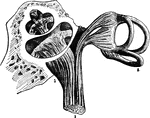
Auditory Nerve
"By anatomists, the auditory nerve is associated with the facial, and is the seventh in order of origin…
Auditory Nerve
"a, the osseous septum grooved for the passage of the cochlear nerve b, which terminates by a free end…
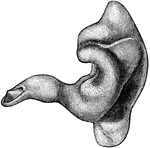
External auditory canal
"A Cast of the External Auditory Canal. The auditory canal is a passage in the solid potion of the temporal…

Cochlea
Diagram of a section of a coil of the cochlea of the ear. Labels: C.C, canal of the cochlea; mR, its…
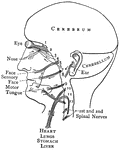
Distribution of the Cranial Nerves
"The cranial nerves are thus arranged in pairs: 1, olfactory nerves, special nerves of smell; 2, optic…
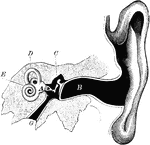
Ear
The human ear. Labels: A, vestibule or antechamber; B, auditory canal; C, the hammer, anvil, and the…

Ear and Auditory Canal
Semi-diagrammatic section through the right ear. Labels: M, concha; G, the external auditory canal;…
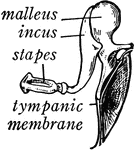
Bones of the Ear
"Across the middle ear a chain of three small bones stretches from the tympanic membrane to the inner…
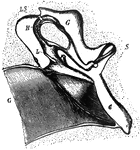
Middle Ear
The middle ear and its bones, considerably magnified. Labels: G, the inner end of the external auditory…
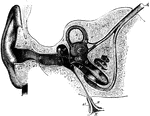
Section Through the Right Ear
Semi-diagrammatic section through the right ear. Labels: M, concha; G, external auditory meatus; T,…
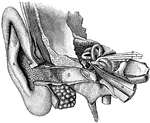
General view of organ of hearing
"A, pinna; B, cavity of the concha, showing the openings of a great number of sebaceous…

Sense of Hearing
Hearing is the perception of certain vibrations of bodies. These vibrations give rise to sound waves.…

Sense of Hearing
Hearing is the perception of certain vibrations of bodies. These vibrations give rise to sound waves.…

Sense of Hearing
Hearing is the perception of certain vibrations of bodies. These vibrations give rise to sound waves.…

Sense of Hearing
Hearing is the perception of certain vibrations of bodies. These vibrations give rise to sound waves.…
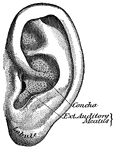
Pinna
"The outer ear consists of a plate of gristle, shaped somewhat like a shell, known as the pinna, or…

Sound Making
Sound making amoung animals serves to aid in frightening away enemies or in warnng companions of their…

Tone
An example of how to produce a tone. This illustration shows one end of a string fixed to a hook and…
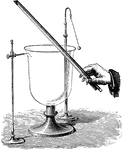
Tone
"A glass bell is fixed to stand, and beside it is a stand carrying a small ivory ball. This is so arranged…

Tone
"If a light strip of steel is firmly gripped at one end in a vice and the other end plucked aside, it…
